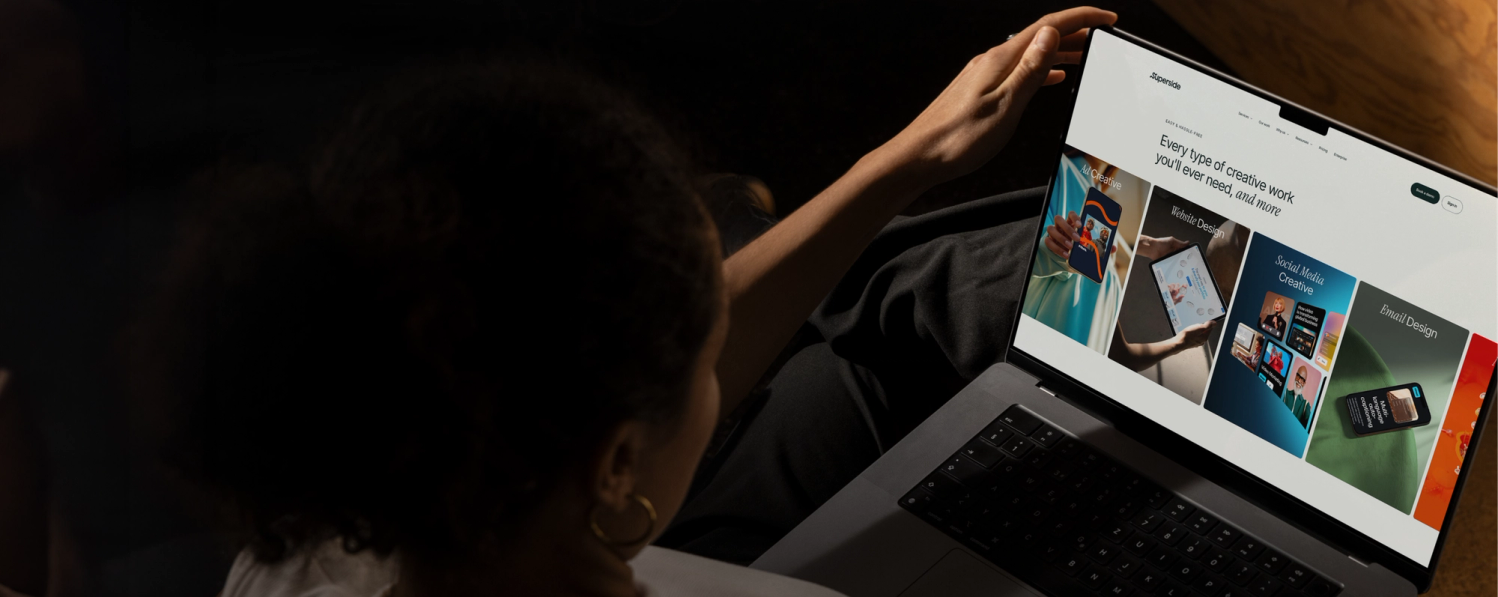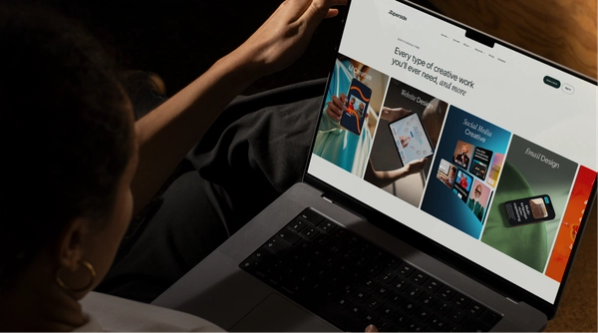Dear Creative Marketer: Stop Trying to Be a Unicorn—Be a Camel

Many companies are giving in to the allure of explosive growth—get-rich-quick schemes that inevitably lead most to failure. Creative marketers can counter the "unicorn" state of mind by embodying the virtues of the camel: A stoic, resourceful animal that manages its resources to ensure long-term prosperity. Below, we present four ways creative marketers can apply the lessons of the camel to great effect.
Time to crush some dreams: You’re not a unicorn, and you never will be.
Yes, it feels a bit like telling a kid to drop this “astronaut” nonsense for a future in accountancy, but we’re all adults here.
There are about 1,150 unicorns worldwide, compared to the 334 million non-unicorns they hover majestically over. We’re kidding ourselves if we keep thinking of our businesses as the odd ones out—the ones bound for fame and fortune while the hoi polloi toil in obscurity.
But it’s not just the unicorn imagineers who need a kick in the pants.
Creative marketers are both subject to and purveyors of this “explosive growth” manifesto, even if the target doesn’t earn them $1B and a shiny horn. We initiate strategies and practices intended to shoot us through the stratosphere, like a jetpack or viral TikTok, and make all kinds of bad calls in the process.
Creative marketing teams need to stop thinking about unicorns and start acting like camels.
Let the Camel Revolution Begin 🐪
Here's what we'll cover. Pack light—it might be a bumpy ride.
No Unicorns in the Desert
Think about how many unicorns you’ve seen, and you’ll understand why they’ve earned their moniker in the first place. They’re a statistical anomaly, not a sustainable model.
In the desert of the mid-recession Wild West, sustainability is as precious to creative marketing teams as water.
The humble camel is a far better mascot, capable of adapting to, surviving and thriving in even the harshest climates. It’s time to consider the even-toed ungulate as your model for growth.
They don’t harbor the mythical allure of their counterpart, but they trump the overpromoted horse by excelling in one area: They’re real, and they exist in the millions.
These businesses are traipsing comfortably along the proverbial wasteland, watching with bemusement as the rest of us labor under get-rich-quick schemes—trying to divine water from sand.
Where creative marketing fits
Here’s an opinion that’ll make your therapist cry: Vulnerability is not okay. Not in your public-facing marketing.
Your staff may be cut, your budget snipped, your plans ruined and your confidence shaken.
But as far as your prospects are concerned, the brand is alive and well. The branded content—the ads, the videos, the social assets and so on—has to keep flowing and keep engaging. However grim the internal reality, the face has to keep smiling. Because no business can start a conversation with a partner that hasn’t done enough to attract them.
For creative marketing teams, that means maintaining consistent, challenging creative output even in times of scarcity.
Here's how to apply the lessons of the camel to achieve stability and growth amidst the corporate desert.
Camelhood 101: Be Adaptable
Despite looking like a llama with bad posture, the camel is an incredibly flexible creature. Known for their ability to adapt to harsh desert and prairie environments, they tune their bodies to deal with drastic shifts in climate and circumstance.
Everything about them is built for a changing environment: Their hair insulates them from both the scorching heat of day and the chill of night, their kidneys and intestines extract and they retain maximum moisture from any item they eat to subvert thirst. In a world of clambering and failing businesses, we could all stand to be more like the camel.
Be as the Camel
Adopting camelhood, a smart creative marketer needs to be adaptable and flexible in their approach.
The demand placed on marketing and design teams today is plenty, nearing impossible: Keep brand creative flowing like water even as companies die of thirst.
The brand needs to keep itself top of mind to survive, but in-house teams are already parched of time and capacity.
For these teams, meeting the instability of the modern market with adaptability means looking inward—evaluating the processes that make adaptation difficult.
Creative as a Service (CaaS) is what many of these would-be desert skeletons turn to in the heat—capable of providing invaluable brand support to design teams for whom marketing’s demand for constant, top-tier creative is a source of stress. Such creative marketing teams have adapted quickly to otherwise draining circumstances with CaaS in their saddle pouch.
Camelhood 102: Be Resilient
Short of outright assault, it’s hard to kill a camel. You can’t sink them: Their broad, tough, and padded feet help them navigate through shifting sands and prevent sinking.
You can’t dehydrate them: Their ability to go into a state of metabolic water conservation lets them produce minimal urine, minimizing water loss from their bodies.
And if you’re just sick of their nonsense, you can’t even strand the freaking things: They have long, muscular legs that make traversing vast distances across arid landscapes a piece of (sandy) cake.
There are few hardships—put a pin in your imagination—that a camel isn’t built to withstand. Knowing that hardship is life itself, it wanders aimlessly past the vacuum of death and struggles that surround it.
Be as the Camel
The dromedary creative marketer should possess resilience and perseverance in the face of challenges or setbacks. Perhaps you can think of one such setback in recent memory, when forces beyond even a marketer’s control shut down or impeded most avenues of commerce as we know them, causing long-term damage to a provably flimsy economic model that—oh, you get it.
Camels don’t have these problems. Because they don’t participate in commerce? Sure. But, more so, they practice resilience in creative marketing.
Knowing the unstoppable forces they march against, they position their creative teams as immovable objects by ensuring marketing is never waiting on that carousel, those social graphics, that video, etc.
Yes, camels do that. No, don’t look it up.
Camelhood 103: Be Resourceful
Do we even need to mention the humps? Let’s talk about the humps. Not content to store only water in those monstrosities, they also store fat that their body converts to energy as needed. If you can get over the obvious aesthetic deficiency (you’re a creative marketer, I know it’s not easy), imagine being so thoughtful as to have a second stomach on your back in the event of impending starvation.
Sure, it’s not so much a decision on the camel’s part as it is a gift from evolution. But if you were ready to chase a unicorn into the sunset, maybe don’t get hung up on semantics. Squeezing your limited resources without drying them out is always a smart move. One doubts the unicorn’s horn stores anything except pride.
Be as the Camel
The cre-amel? cam-ative? camel marketer is clever in how they deploy their available budget, time and tools.
Now, any member of any creative team is reading that with something between a furrowed brow and an enlarged vein in their forehead.
They’re trying to keep marketing happy FCS (for camel's sake 🐫)—but they’re being squeezed too tight.
There aren’t enough designers and/or capabilities on the team to make a thoughtful or challenging creative asset for every little thing marketing needs, but marketing won’t hit its targets without them.
When that happens, it’s everybody’s problem.
Resourcefulness here suggests empowering creative marketing teams to deliver on their many demands, while also keeping creative costs low.
It’s no easy feat for most in-house design teams (or the marketers they annoy), but it’s possible to supplement creative with dedicated design partners that not only act as a lifeline in times of budgetary distress—they also actively propel the brand to a more lucrative future.
Camelhood 104: Be Versatile
Looking at how humans have used camels for the past 3,000 years, camels are evidently masters of all trades. They’ve been partners (arguably unwillingly, but let’s not lose the metaphor till we’re done with it) in transportation, the wool trade, dairy and even general companionship. Also meat, but let’s just focus on the nice parts for now.
Be as the Camel
Similarly, the creative marketer studying camelhood should be of similar versatility. They should have different techniques and creative strategies tailored to fit each of the many marketing channels and platforms that deserve their attention.
There are so many bases that marketing needs to cover to be truly effective in times like these. Messaging can’t be falling short because it’s ill-fitted to Instagram’s formatting, or doesn’t look good on Facebook ads, or strikes the right tone for TikTok but comes off cringey on other video platforms, etc.
Creative marketing teams need something that most, sadly, don’t have in their back pocket: The capacity to truly do it all with elements of video marketing, motion design, AR & 3D, illustration, social-specific assets and beyond. The commitment and capacity to fill every available channel with compelling assets and content are what keep brands at the forefront of their conversations.
True Growth Comes From Consistency
There’s a deep ego attached to the business unicorn mythos—a need to be perceived as special, deserving of and entitled to rapid success.
Like most endeavors, this anxious attachment is what keeps them chained to the ground. When you chase something so voraciously, you can’t help but ignore many other viable paths.
The most successful businesses are rarely those who shot to stardom out of the gate. By far and away, the major players are the ones who built their brands steadily on a solid foundation.
For creative marketing teams, stability is dependent on consistency. Your audience is regularly overwhelmed by competing voices in and outside of your industry.
They won’t have your company top of mind unless A) they happen to come across your brand at the precise moment they’re most ready to buy, or B) creative is consistently thoughtful and abundant enough in their feed that they can’t help but have you in mind.
The former is a stroke of luck. The latter is more realistic, better proven, and fully within reach of those who prioritize it.















